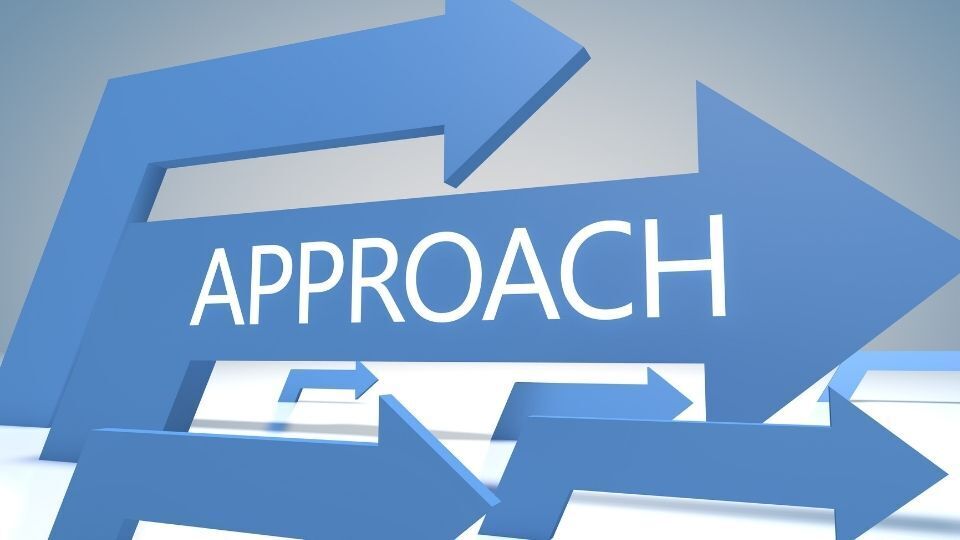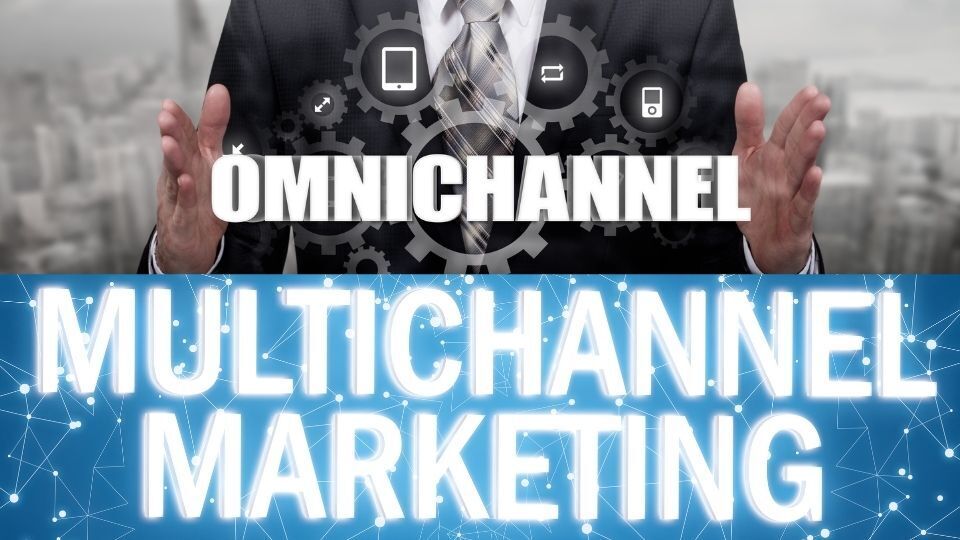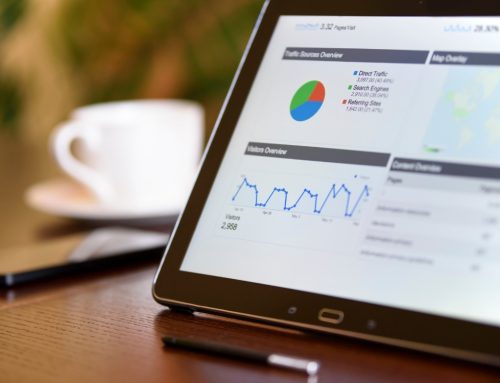In today’s competitive digital landscape, businesses are under constant pressure to meet customers where they are — on every device, platform, and touchpoint. Two strategies dominate this conversation: omnichannel vs multichannel marketing. While both aim to connect brands with audiences across various channels, the way they approach integration, messaging, and customer experience is fundamentally different.
For brands aiming to maximise engagement, conversions, and loyalty, knowing the difference isn’t optional — it’s a strategic necessity. Omnichannel marketing focuses on creating a unified, seamless customer journey across all channels, ensuring every interaction feels connected and personalised. In contrast, multichannel marketing ensures a brand is present in multiple places but does not necessarily integrate the experience between them.
Failing to understand the distinction can lead to wasted marketing spend, fragmented customer experiences, and missed opportunities. In this blog by Smart Digitants, we’ll break down the definitions, advantages, and disadvantages of each approach, explore where they work best, and provide actionable insights to help you choose the right strategy for your business. By the end, you’ll be equipped to identify whether an omnichannel strategy or a multichannel approach will deliver the most value for your marketing goals.
What is Omnichannel Marketing?
Omnichannel marketing is a strategy that integrates all marketing channels — both online and offline — to deliver a seamless and consistent customer experience. Unlike approaches that treat each channel as a separate entity, omnichannel marketing ensures that every touchpoint is interconnected, allowing customers to move fluidly between them without friction or a shift in brand tone.
In practice, this means a customer can browse a product on your mobile site, receive a personalised follow-up email, visit your physical store, and interact with your brand on social media — all while feeling like the brand “remembers” who they are and what they’re looking for. The messaging, offers, and interactions are synchronised across every channel.
This level of integration requires:
- Unified data systems: Centralised customer profiles that update in real time.
- Consistent brand messaging: Visual identity, tone of voice, and offers remain coherent across all platforms.
- Cross-channel tracking: The ability to follow the customer journey end-to-end.
Examples of Omnichannel Marketing in Action
- Retail Clothing Brand – A shopper adds items to their online cart, abandons the session, and later receives a targeted push notification with a discount. When they visit the store, the assistant already knows the items in their cart via the loyalty app.
- Banking Services – A customer begins a loan application on a website, gets interrupted, and later continues the process seamlessly on a mobile app with live chat support picking up exactly where they left off.
- Hospitality Industry – A guest books a hotel room online, receives a pre-stay email with upgrade options, gets personalised recommendations through the hotel’s app, and enjoys an in-room tablet interface reflecting their previous preferences.
Benefits of Omnichannel Marketing
- Stronger customer loyalty: Consistent experiences build trust and encourage repeat business.
- Higher engagement rates: Personalised, context-aware interactions resonate more with audiences.
- Improved customer insights: Unified data reveals patterns across all channels, enabling smarter marketing decisions.
What is Multichannel Marketing?
Multichannel marketing is the practice of engaging customers through multiple platforms — such as websites, email, social media, print, TV, and in-store — but without necessarily linking those channels into a unified system. The primary goal is to maximise reach by ensuring the brand is present wherever potential customers are likely to be, even if each channel operates independently.
While omnichannel marketing focuses on creating one connected journey, multichannel marketing is more about being visible in as many relevant places as possible. Each channel might have its own campaigns, content, and tracking, and the customer experience may vary from one touchpoint to another.
This approach has been widely used for decades, especially before the rise of sophisticated customer data platforms that enable real-time integration. Many businesses still rely on it today because it is simpler and often less resource-intensive than a full omnichannel strategy.
Examples of Multichannel Marketing in Action
- Automotive Dealership – Runs separate campaigns for radio, print magazines, Google Ads, and Facebook, without a shared data system linking the audience between them.
- Fast-Food Chain – Promotes a new menu item on Instagram, sends an unrelated newsletter to its email subscribers, and runs a TV advert — all using different creative concepts.
- Local Bookshop – Uses flyers, an independent e-commerce site, and a Facebook page to promote events, but doesn’t integrate customer preferences or purchase history across these platforms.
Benefits of Multichannel Marketing
- Wider audience reach: Multiple channels increase the chances of catching customer attention.
- Channel flexibility: Brands can adapt content to suit each platform’s strengths.
- Lower integration complexity: No need for a centralised tech infrastructure.
Omnichannel vs Multichannel Marketing: Key Differences
Although omnichannel vs multichannel marketing are often mentioned in the same breath, the differences go beyond simple semantics. The distinction lies in integration, customer experience, and strategic focus. Understanding these contrasts will help determine which approach aligns with your business goals.
1. Integration Level
- Omnichannel marketing: All channels are connected, sharing customer data and ensuring a unified message.
- Multichannel marketing: Channels operate independently, with little to no data sharing between them.
2. Customer Experience
- Omnichannel: Prioritises a seamless journey. Customers can switch between touchpoints without losing context.
- Multichannel: Each channel delivers its own experience, which may be consistent in branding but not connected in function.
3. Messaging Consistency
- Omnichannel: Every interaction reflects the same tone, visuals, and offers — all based on real-time customer insights.
- Multichannel: Branding is usually similar, but promotions, content, and offers may differ from one channel to another.
4. Data Usage
- Omnichannel: Relies on centralised customer profiles updated across all channels, enabling personalisation at every stage.
- Multichannel: Data is often siloed, with each platform collecting and using its own metrics separately.
5. Strategic Goal
- Omnichannel: Build long-term relationships through a connected, customer-first approach.
- Multichannel: Maximise exposure by leveraging multiple independent touchpoints.
| Feature | Omnichannel Marketing | Multichannel Marketing |
| Channel Integration | Fully integrated | Independent |
| Customer Journey | Seamless and connected | Fragmented |
| Data Management | Unified and centralised | Siloed |
| Messaging | Consistent and personalised | Consistent branding but varied offers |
| Primary Objective | Loyalty and engagement | Reach and awareness |
Pros and Cons of Omnichannel Marketing
A strong omnichannel marketing strategy can transform customer relationships, but it also requires significant resources and planning. Understanding both the benefits and the potential challenges will help you make an informed decision about whether it’s right for your business.
Benefits of Omnichannel Marketing
- Seamless Customer Experience
Every interaction is connected, whether it’s online, in-store, or through customer support. This consistency boosts trust and encourages repeat purchases. - Higher Customer Retention
By tailoring messaging to each individual based on their previous interactions, brands can build loyalty and keep customers engaged over the long term. - Better Data Insights
Centralised customer profiles allow businesses to analyse behaviour across all touchpoints, revealing patterns that can drive smarter marketing decisions. - Increased Sales Opportunities
Personalised offers at the right moment can increase conversion rates, cross-sells, and upsells. - Stronger Brand Identity
Uniform tone, design, and values across every channel make the brand instantly recognisable and more memorable.
Challenges of Omnichannel Marketing
- High Implementation Costs
Building the technology infrastructure — such as integrated CRM systems, data analytics platforms, and marketing automation — can be expensive. - Complex Data Management
Maintaining accurate, up-to-date customer profiles requires rigorous processes and compliance with data privacy regulations. - Staff Training Requirements
Teams must be trained to deliver a consistent experience across channels, which may involve cultural shifts within the business. - Longer Setup Time
Compared to multichannel marketing, creating a fully integrated omnichannel system can take months or even years to perfect.
Pros and Cons of Multichannel Marketing
While multichannel marketing lacks the deep integration of an omnichannel approach, it remains a popular and effective strategy for many brands — particularly those focused on reach over personalisation. By understanding its strengths and weaknesses, businesses can determine whether it’s a standalone solution or a stepping stone towards omnichannel marketing.
Benefits of Multichannel Marketing
- Broader Audience Reach
Being active across multiple channels increases the likelihood of reaching different customer segments with varied preferences. - Platform Flexibility
Each channel can be tailored to suit its strengths — for example, highly visual storytelling on Instagram, detailed thought leadership on LinkedIn, and direct offers via email. - Lower Complexity
Without the need for complex integration, businesses can launch campaigns faster and adapt them for each platform. - Cost Control
Brands can choose to invest more in their most effective channels without committing to a large-scale technology overhaul. - Easier Experimentation
Channels can be tested independently to identify which deliver the best results before committing to deeper integration.
Challenges of Multichannel Marketing
- Inconsistent Customer Experience
Without integration, customers may encounter conflicting offers or messaging across platforms. - Fragmented Data
Each channel collects its own metrics, making it difficult to get a complete view of customer behaviour. - Missed Personalisation Opportunities
Without centralised data, tailoring the journey for individual customers is challenging. - Brand Dilution Risk
Differing creative approaches on each channel can weaken overall brand identity if not carefully managed.
Which Approach is Right for Your Business?

Deciding between omnichannel vs multichannel marketing depends on your organisation’s goals, budget, infrastructure, and audience expectations. While both strategies aim to engage customers, the resources required — and the potential return — vary significantly.
Factors to Consider
- Business Size and Stage
- Start-ups and small businesses may benefit from a multichannel approach at first, building brand presence without the heavy investment of a fully integrated system.
- Established brands with existing customer bases and resources can gain more value from omnichannel strategies that deepen engagement.
- Budget and Resources
- Omnichannel marketing demands investment in technology, data analytics, and cross-channel coordination.
- Multichannel marketing can be scaled more flexibly based on available funds.
- Customer Expectations
- If your target audience expects smooth transitions between online and offline experiences, omnichannel is the clear choice.
- If they engage with your brand sporadically through different channels, multichannel might suffice.
- Technology Infrastructure
- Omnichannel requires robust CRM systems, marketing automation, and data synchronisation tools.
- Multichannel can operate with simpler, channel-specific tools.
- Competitive Landscape
- In industries where competitors already offer highly integrated customer journeys, a purely multichannel approach may feel outdated.
Decision Matrix
| Factor | Choose Omnichannel If… | Choose Multichannel If… |
| Budget | You have the resources for integrated systems | You prefer low-cost, flexible campaigns |
| Customer Expectation | Customers expect a unified journey | Customers engage on separate, unrelated platforms |
| Goal | Maximise loyalty and retention | Maximise reach and brand awareness |
| Technology | You can support real-time data sharing | You rely on platform-specific tools |
| Competition | Competitors offer integrated journeys | Market is less advanced digitally |
How to Transition from Multichannel to Omnichannel Marketing
For many businesses, multichannel marketing is the starting point — but evolving towards an omnichannel approach can dramatically improve customer engagement and brand loyalty. The shift requires planning, investment, and cultural alignment across the organisation. Here’s how to approach the transition.
1. Assess Your Current Position
Begin by auditing all your existing channels. Identify where they operate independently, where there’s overlap, and where integration could improve the customer experience. This includes reviewing:
- Customer touchpoints (digital, in-store, service channels)
- Messaging consistency
- Data collection methods
- Technology systems in use
2. Define Your Customer Journey
Map out the ideal customer experience from awareness to purchase and beyond. Determine where a connected journey would reduce friction or add value. For example, enabling customers to start a purchase online and complete it in-store without repeating details.
3. Invest in the Right Technology
A centralised Customer Relationship Management (CRM) system is essential for omnichannel marketing. Pair this with:
- Marketing automation tools
- Cross-channel analytics platforms
- Real-time inventory and fulfilment systems (for retail and e-commerce)
4. Unify Your Data
Data integration is the foundation of omnichannel success. Ensure that all customer interactions feed into a single profile, updating in real time. This allows for personalisation and consistent messaging across channels.
5. Train and Align Teams
Staff at every level — from sales to customer service — must understand the brand’s unified vision and be trained to deliver a consistent experience. Internal communication is just as important as external marketing here.
6. Roll Out in Phases
A complete transformation can be overwhelming. Start by integrating your most active or profitable channels, then expand gradually. For example:
- Phase 1: Sync email, website, and in-store POS systems
- Phase 2: Add mobile apps, live chat, and social channels
- Phase 3: Integrate advanced personalisation and AI-driven recommendations
7. Monitor and Optimise
Track customer feedback, engagement, and conversion data to measure the impact of your new approach. Make adjustments continuously to refine the omnichannel experience.
Frequently Asked Questions
1. What is the main difference between omnichannel vs multichannel marketing?
The core difference between omnichannel vs multichannel marketing lies in integration. Omnichannel marketing connects all channels into one seamless experience, sharing customer data and ensuring consistent messaging. Multichannel marketing uses multiple platforms to reach audiences but treats each as a separate, independent touchpoint.
2. Which is better: omnichannel or multichannel marketing?
Whether omnichannel vs multichannel marketing is “better” depends on your business goals. Omnichannel works best for brands focused on customer loyalty, retention, and personalised journeys. Multichannel can be more suitable for businesses prioritising broad reach, fast campaign deployment, and lower technical complexity.
3. Can small businesses use omnichannel marketing?
Yes — although omnichannel vs multichannel marketing often gets framed as big-brand territory, small businesses can implement omnichannel principles by starting small. For example, they can sync their website, email marketing, and point-of-sale systems to create a connected experience before expanding to additional channels.
4. Is multichannel marketing outdated?
Multichannel marketing is not outdated, but when comparing omnichannel vs multichannel marketing, it’s clear that customer expectations are shifting. In markets where competitors already offer integrated experiences, a purely multichannel approach can feel less compelling to consumers.
5. What technology do I need for omnichannel marketing?
To succeed in omnichannel vs multichannel marketing comparisons, omnichannel strategies require:
- A centralised CRM system
- Cross-channel analytics tools
- Marketing automation software
- Integrated inventory and fulfilment systems (for retail)
These tools ensure customer data flows freely between channels for consistent and personalised interactions.
6. How does customer data differ in omnichannel vs multichannel marketing?
In omnichannel marketing, customer data is unified and updated across all touchpoints in real time. In multichannel marketing, data is typically siloed within each platform, making it harder to track a customer’s journey holistically.
7. Which industries benefit most from omnichannel marketing?
When evaluating omnichannel vs multichannel marketing, industries like retail, hospitality, banking, and healthcare often see the greatest impact from omnichannel strategies. This is because their customers interact through multiple touchpoints and expect continuity across them.
8. Can a business use both strategies at once?
Yes — many companies operate in a hybrid model, using multichannel marketing for brand awareness campaigns and omnichannel marketing for nurturing leads and retaining customers. This approach allows for gradual integration without losing reach.
Ready to Elevate Your Marketing Strategy?
At Smart Digitants, we help businesses understand and implement the right approach to strengthen their marketing Strategy plan, whether that’s perfecting your multichannel presence or guiding you step-by-step towards a fully integrated omnichannel system.
Our Content Writing Team at Smart Digitants is a group of dedicated professionals, passionate about creating high-quality, engaging content.
- What is Omnichannel Marketing?
- What is Multichannel Marketing?
- Omnichannel vs Multichannel Marketing: Key Differences
- Pros and Cons of Omnichannel Marketing
- Pros and Cons of Multichannel Marketing
- Which Approach is Right for Your Business?
- How to Transition from Multichannel to Omnichannel Marketing
- Frequently Asked Questions
- 1. What is the main difference between omnichannel vs multichannel marketing?
- 2. Which is better: omnichannel or multichannel marketing?
- 3. Can small businesses use omnichannel marketing?
- 4. Is multichannel marketing outdated?
- 5. What technology do I need for omnichannel marketing?
- 6. How does customer data differ in omnichannel vs multichannel marketing?
- 7. Which industries benefit most from omnichannel marketing?
- 8. Can a business use both strategies at once?
- Ready to Elevate Your Marketing Strategy?










